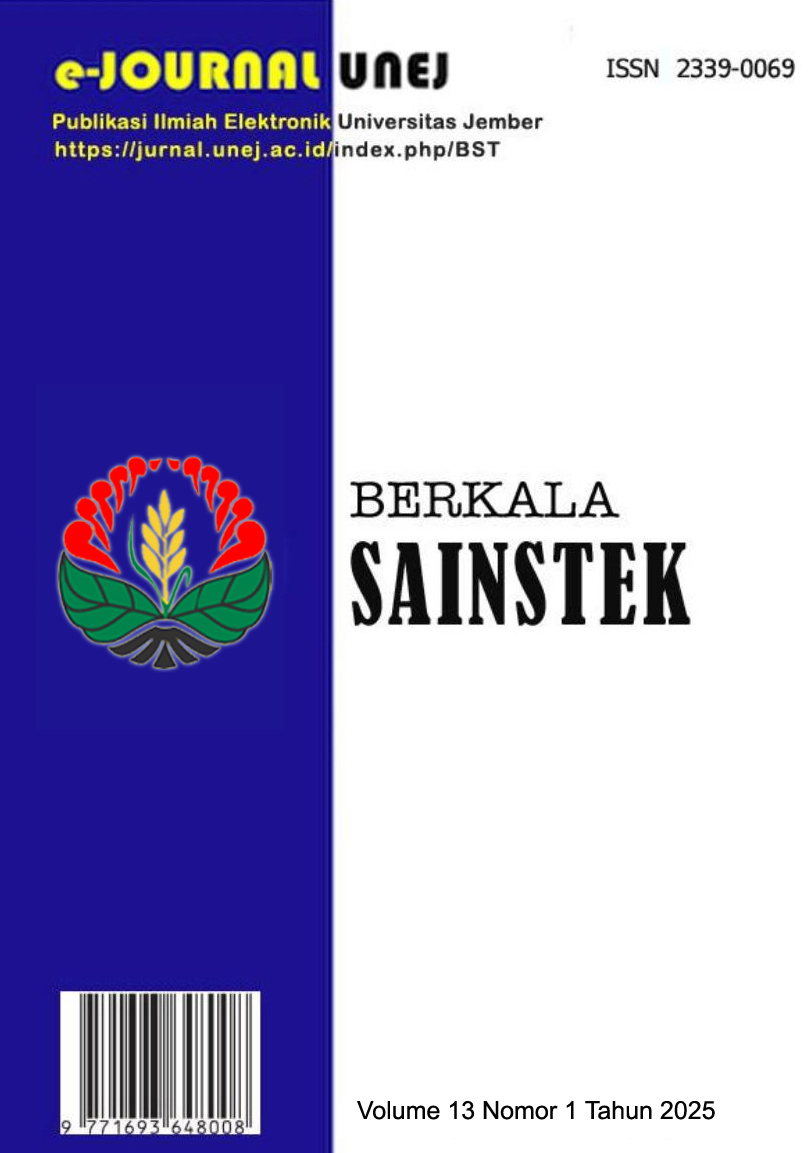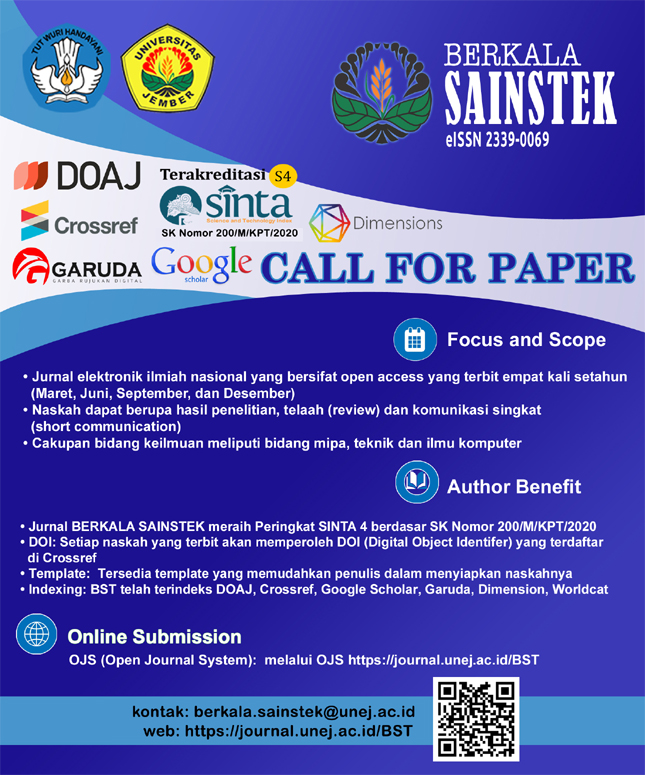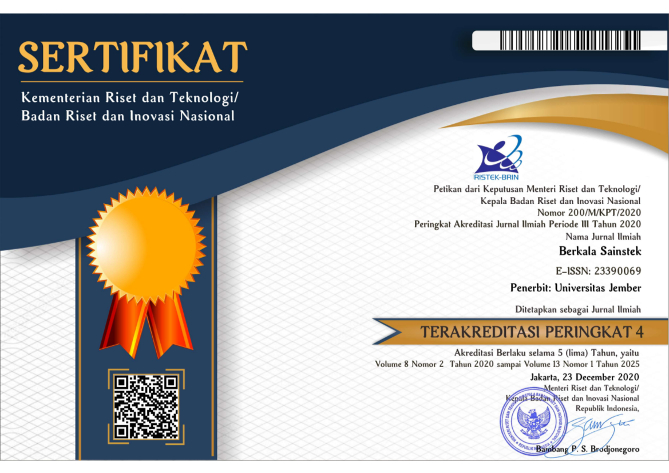Prevalence of Red-Green Color Blindness In High School Students In Malang City
DOI:
https://doi.org/10.19184/bst.v13i1.42836Keywords:
Red-green color blindness, Prevalence, High school, Malang cityAbstract
Color blindness is a visual impairment caused by the cone cells of the eye not being able to perceive a certain color spectrum. Color blindness is an X chromosome-linked genetic disorder that has a cross-inheritance pattern (Criss-Cross Inheritance). One type of partial color blindness is red-green color blindness. Red-green color blindness is divided into deutans and protans. The purpose of this study was to determine the prevalence of red-green color blindness in high school students in Malang City. This research was conducted in five high schools in Malang City and total sample was 254 students. The red-green color blindness detection was done using Ishihara's 24 plate book. The analysis was conducted to determine the prevalence of red-green color blindness, allele frequencies of color blindness and patterns of inheritance of color blindness.The results of the study showed that the prevalence of red-green color blindness among students in Malang was 3.54%, with all male patients having a prevalence of 7.89%. Specifically, 1.18% of students were identified as having protan color blindness, while 2.36% had deutan color blindness. The allele frequency for red-green color blindness is 0.0263, while the frequency of the normal allele is 0.9737. Analysis of the pedigree diagram in families with color blindness show proband inherited the color blindness gene from a carrier mother, following a criss-cross inheritance pattern.
Downloads
Downloads
Published
Issue
Section
License
Copyright (c) 2025 Yessi Sylvia Putri, Rike Oktarianti, Susantin Fajariyah

This work is licensed under a Creative Commons Attribution-NonCommercial 4.0 International License.





